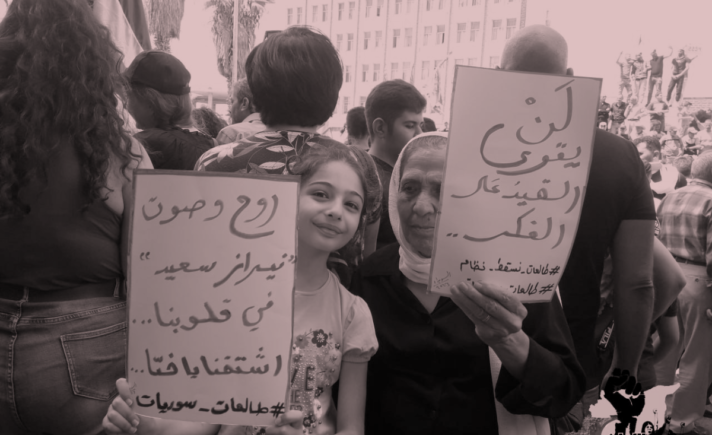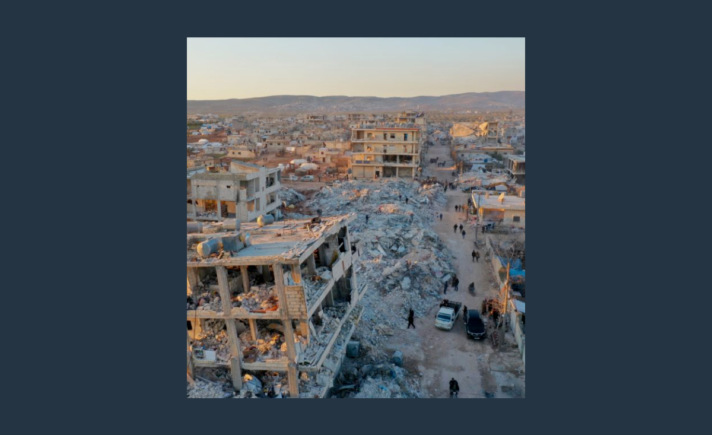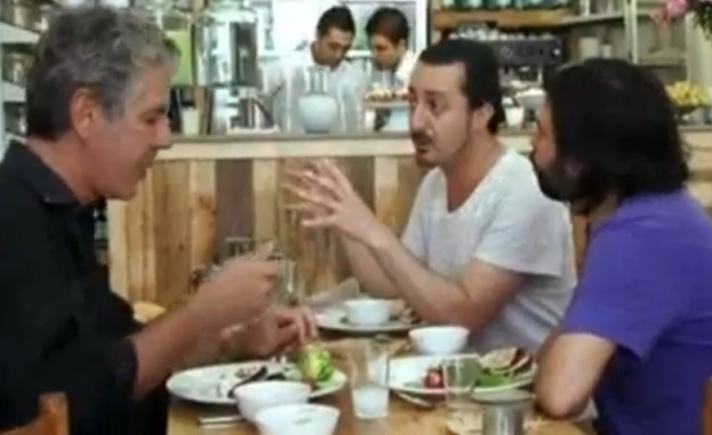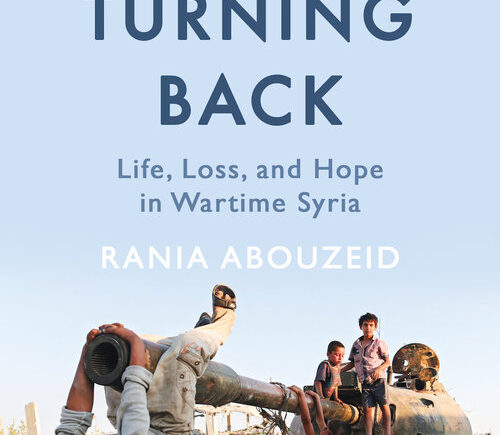When it comes to Western understandings of the Middle East, there is a strong tendency to project current conflicts and dysfunction backward in time and assume such things are somehow natural or inevitable. On Syria specifically, for many people, the uprising against Bashar al-Assad’s regime and the ensuing civil war were their first introduction to the country. Now, following eight years of horror, abuse, and disillusionment, it’s hard to imagine a time before, especially for those who do not have a direct memory of the place. With the fighting ostensibly drawing to a close, and a new, uncertain and dissatisfying status quo beginning to emerge, now seems like an appropriate time to look back, not just at the past eight years, but at the society that existed before being pulverized by war.
With this thought in mind, I eagerly started reading Alia Malek’s The Home That Was Our Country: A Memoir of Syria (Bold Type Books, 2017), which has received high praise from other reviewers. Malek is Syrian-American, born and raised in the United States. Growing up, she travelled to Damascus occasionally to visit family and, as an adult, spent time in the Middle East as a human rights lawyer and journalist. In the spring of 2011, with the first stirrings of unrest in Syria, Malek moved to Damascus. On the surface, she was there to oversee the restoration of her maternal grandmother Salma’s apartment and work on a book about the matriarch’s life. But Malek had other motivations as well. Following the revolutions in Tunisia and Egypt, she wanted to play a role, as she writes, “in recasting the nation as it transitioned (I hoped) from decades of stifling and corrupt dictatorship into something better for all its people.”
The Home That Was Our Country weaves together family and national history with Malek’s own experience living in Syria at a time when the country appeared to be on the cusp of change. Her grandmother Salma’s apartment is the central motif that is supposed to unite the different strands. In 1949, shortly after Syria gained its independence, Salma moved into the newly-built flat as a young bride. In 1970, the same year Hafez al-Assad came to power, the family moved to a bigger house, leasing the apartment to a tenant who took advantage of favorable rental laws to stay long after Malek’s family wanted him to leave. Finally, in 2010, the year before the Syrian uprising began, Malek’s parents were able to eject the unwanted tenant, paving the way for Malek to move to the country just as protesters were beginning to take to the streets demanding that their unwanted leader relinquish power.
Unfortunately, however, the book falls short of coalescing around the symmetry of these overlapping timelines. Instead, the different elements fit oddly with one another, often feeling only loosely related. At times, Malek veers off on tangents that seem to be part of a different story altogether. The result is a book with a confused identity: Is this a national history told through the experience of one family? Is it Malek’s memoir of reconnecting with the region and society her parents left behind? Or is it an overview of her experiences living in Damascus and reporting on the first two years of the Syrian uprising? All of these elements are there, but they aren’t fully developed or integrated. Ultimately, the central pillar, the motif of the apartment, falls to the background and the book never achieves cohesion.
To be sure, there are moments when the narrative flows and the details of the story are poignant and powerful. The social world of middle- and upper-middle-class Syrians in Damascus during the early days of independence, when Salma first moved to the city, comes alive with descriptions of the streets where “a person could find just about everything one might need” from fruits, vegetables, and meat from the local butcher to sweet and savory roasted nuts and medicine from the pharmacy. Salma’s neighborhood and building are “a microcosm of the people who made up new and old Syrian society […] There were Turks, Kurds, Arabs—and now Palestinians—all of different classes, some Christian and others Muslim […] There was never a question of whether they’d be able to coexist.” Salma hosts salons in her living room where women from near and far trade news, sip coffee, and ask their well-connected hostess to help sort out problems.
Against a backdrop of military coups and regional upheaval, life proceeds with surprising normalcy. But after the Baath Party takes power, the corruption, oppression, and fear that come to define Syria under the Assads begin to creep in. When recounting the story of her parents’ wedding in 1974, Malek notes that the owner of the restaurant where the reception took place was later imprisoned. His crime? Refusing to let a relative of the president take a cut of his business. “Under these common arrangements, an entrepreneur of a successful endeavor would have to share his profit with the Assad family or a member of his inner circle, even though the latter wouldn’t provide capital or ideas or income,” Malek writes.
By the time her mother leaves a few months after the wedding to join her husband in the United States, where he is studying medicine, Syria has already become a place where “everyone knew that few who left […] would come back.” Malek’s mother and father join the ranks of Syrians who intended to return, but end up “spread across the globe because there was no way to dissent from what the regime demanded of people and no way to choose your own path based on your own merit.” At the same time, many Syrians, including Malek’s relatives who stayed behind, “didn’t feel directly implicated [in the regime’s crimes]; it was all happening to other people. In this way, I think many Syrians learned to tolerate the regime’s voracious greed for absolute power: they were too busy being grateful it wasn’t them.”
Malek enters the story as a small child visiting Syria with her mother, and then as a young adult exploring the Middle East on her own for the first time. By this point Salma has passed away, and her story and that of her apartment become secondary. Malek’s experiences in the Middle East are now the driving force behind the narrative, and the book begins to read like a travel log of the time she spends in different countries in the region accompanied by broad strokes of historical context that often veer away from what had been the main theme of the book up to this point.
There’s a trip to Egypt to visit cousins, a summer spent in the West Bank as a young law student, brief trips back to Damascus to visit family, a visit to Beirut and, later on, a period of time spent living there. Along the way, the reader is given an overview of the Palestinian-Israeli conflict, a sense of the complicated position of Jewish Syrians in the region, and an introduction to Lebanese politics, including a tone-deaf description of the 2005 suicide bombing that killed former Lebanese prime minister Rafiq al-Hariri and 21 others as “explosive (both literally and figuratively)”.
Meanwhile, despite her central position in the story at this point, we somehow don’t learn much about Malek and what makes her tick beyond surface level explanations of why she sets out on the journeys she chooses, such as wanting to have an experience other than a typical corporate internship during law school or growing disillusioned with a government job in Washington, D.C.
Finally, in April 2011, when the renovation gives Malek cover to move to Damascus at the beginning of the Syrian uprising, Salma’s apartment reenters the story. Her family had “at last gotten our house back from the man who refused to leave […] I wondered now if Syrians could get their country back,” Malek writes.
Early on in Damascus, Malek spends her time watching competing television news broadcasts about the growing unrest with her family and observing evidence of the regime’s jitteriness in the menacing presence of neighborhood mukhabarat (intelligence services) offices and armed soldiers in the streets. There’s a sense that she wants to be closer to what is happening, but is held back by her relatives, who are exceedingly nervous about her safety and their own, and by the fact she is essentially an outsider (it had been seven years since she last visited Syria, and she had never before lived in the country) disconnected from networks that could give her access to the clandestine world of dissent.
Initially unable to find a role for herself “in recasting the nation,” as she had hoped, Malek throws herself into researching her grandmother’s life, negotiating with contractors and trying to finish up the renovation. As time goes on, and the situation in Damascus become more tense, chance encounters give her small glimpses into the world of people protesting the regime. But many people she comes into contact with, including family members, remain neutral or openly support the regime and grow increasingly suspicious about what she is doing in Syria.
Malek eventually gets in touch with a social scientist in Damascus to help her finish the research about Salma’s life, but that project soon takes a back seat. “Once he mentioned that he was involved in an underground aid network, our conversation quickly changed to more urgent matters.” The social scientist introduces her to a network of activists, and the focus of the book switches to Malek’s reporting on the Syrian uprising. The anecdotes that follow, while providing insight into the motivations of protesters and the risks they face, are loosely related––at best––to the narrative of Salma’s life at the beginning of the book or to Malek’s experiences in the region as a young adult, and Malek never makes the argument that there is a connection clear. Instead, the earlier parts of the book are cast aside as she recounts reporting trips to Armenia, the Syrian coastal city of Tartus, and the Turkish-Syrian border. Malek does make a last-minute effort to bring things full circle by meeting with the son of the unwanted tenant, now a refugee in Europe, who occupied Salma’s apartment for so many years. But, by this point, the reader is left wondering how exactly the various strands of narrative in the book relate to one another. There are several potentially convincing answers to this question, but it is never spelled out coherently or integrated into how the book is organized or how the story is told.
Ultimately, The Home That Was Our Country did contain some of the insight into Syrian society as it existed before the war that I hoped to gain by reading it. And having Syrian or hyphenated Syrian voices at the center of storytelling about the country’s past, present, and future is certainly important. Yet the disjointed nature of the narrative made it difficult for me to stick with the story all the way through. The book also fell short of creating an intimate and tangible sense of who Malek and her grandmother are (the two main characters) and how that makes them relate to the events that unfold. It’s as if Malek is holding the reader at arms-length, treating them to a version of family and personal history that would be offered to a stranger. To be fully effective, the form of memoir demands more than that. The late Lebanese-American journalist Anthony Shadid’s House of Stone and British-Palestinian activist Ghada Karmi’s In Search of Fatima both come to mind as books written from a similar diaspora perspective that convey a much clearer sense of who their narrators are and how that positions them in relation to what they are writing about. This intimacy creates an emotional connection with the reader that allows the subject matter to be felt and invested in as opposed to just absorbed. When it comes to finding this quality in a memoir about Syria, I will have to keep reading.







